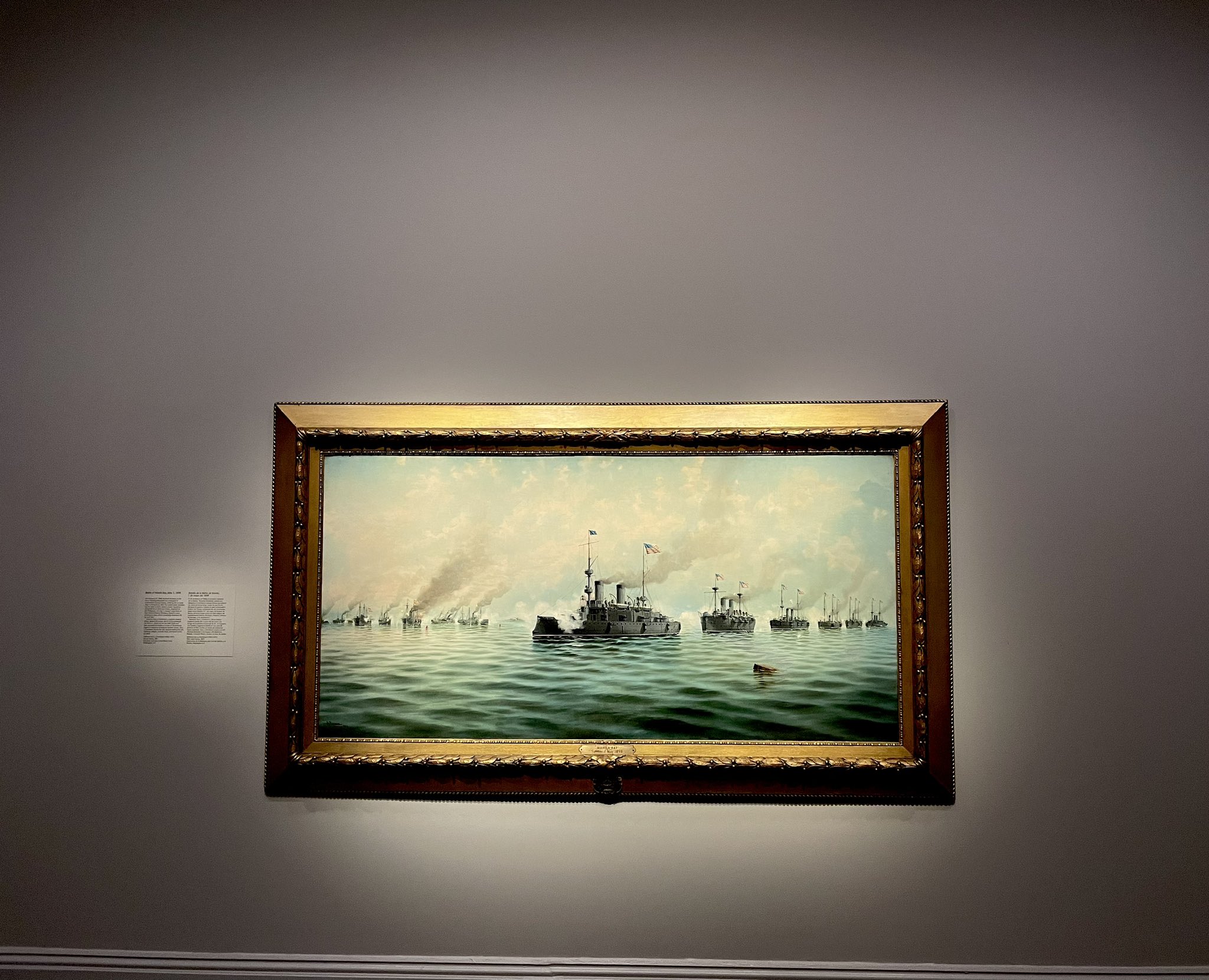Imperial Progress at the Smithsonian

The National Portrait Gallery is running an exhibition titled 1898: U.S. Imperial Visions and Revisions immediately behind the presidential portraits. It is an interesting and unusually nuanced exhibit.
The era under examination is familiar to Americans, but the terms of a familiar debate are reversed. The exhibit attempts to debate the War of 1898, arguably the pivot point of a republic’s turn to an empire. The old ways of the republic were swept away in a bid to throw out an aging great power rival from the hemisphere. To that cause came unparalleled naval expansion, protectorates such as Cuba and Philippines, and the acquisition of Hawaii and Guam. Incidentally, the opposition was from a section of a now dormant school of the “old right”.
Empires and colonialism are considered reactionary forces—that’s what you might hear in all the “decolonization” nonsense at Anglosphere universities. This, of course, is the gravest and most insidious myth that is perpetuated in international relations.
The reality is that empires have always been a progressive force throughout history. Empires brought modernity to continents. Empires were often multicultural, ordered under an imperial elite. Empires charted sea routes. Empires went to the poles, discovered island chains, and expanded frontiers. Empires explored and conquered. Anthropology, evolutionary biology, and archaeology had their heydays as academic disciplines under empires.
Empires also promoted values and homogenized foreign cultures, often eradicating horrific local customs through force under an imperial elite, formed, nurtured, and educated at the imperial core. It was an empire that spent a significant chunk of its naval budget on fighting piracy and human trafficking.
When Englishmen arrived in southern Africa, they encountered a society that lacked concepts of written script, beasts of burden, and the wheel. The British eradicated sati (Hindu widow-burning) and jizya (Islamic religious tax on non-Muslims), and were in turn supported by local reformers who encouraged them to break up religious schools and open more scientific colleges. The Spaniards put an end to human sacrifice and cannibalism in central America.
Subscribe Today
Get daily emails in your inbox
Progressivism has forever been associated with imperial modernity and all the fashionable fads that come with it. It was the progressives who supported eugenics, phrenology, and other matters of “scientific consensus”. It was the reactionaries who opposed industrialization. It was also the reactionaries who opposed American involvement in the Philippines. It is still the reactionaries who are opposed to wasting blood and treasure to ensure pride flags in Kabul and Kiev.
The theology of progress is predicated on the idea of cultural homogeneity and equality; this theology can theoretically permeate a society, if only it is given a push by our enlightened betters. Reactionaries suffer from no such idealism or delusion, and believe that while individuals can break free of cultural bounds and assimilate, societies as a whole are bound by cumulative forces of history and geography that need their own phases of evolution; for this reason, reactionaries believe it is imprudent to push for egalitarianism and cultural modification on a grand scale.
In that light, this exhibit is unusually clarifying. The concept of left and right gets blurred, as it should. I don’t think that was the intention, but it certainly is a treat to explore with a Straussian framework in mind.